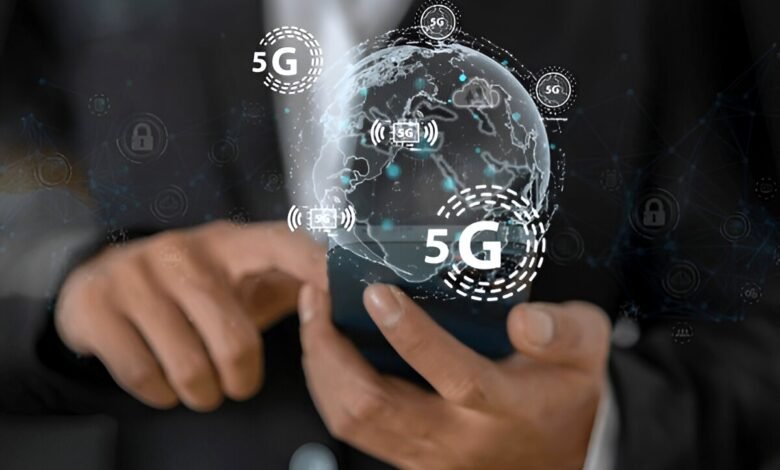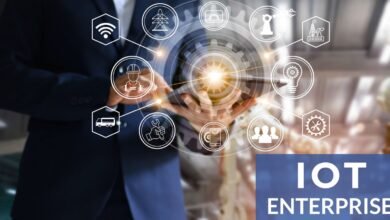5G and IoT in Germany: The Future of Connectivity
The digital landscape is evolving at a rapid pace, and two key technologies leading this transformation are 5G (fifth-generation wireless technology) and IoT (Internet of Things)

The digital landscape is evolving at a rapid pace, and two key technologies leading this transformation are 5G (fifth-generation wireless technology) and IoT (Internet of Things). In Germany, these advancements are shaping the future of connectivity, revolutionizing industries, enhancing urban infrastructure, and improving everyday life. As the country embraces smart cities, autonomous vehicles, and Industry 4.0, 5G and IoT are becoming fundamental to progress.
This article explores how 5G and IoT are influencing Germany’s connectivity, highlighting their benefits, applications, and challenges.
1. The Role of 5G in Enhancing IoT Infrastructure
Ultra-Fast Speeds and Low Latency
5G technology provides significantly higher speeds than previous generations, with download rates reaching up to 10 Gbps. This is crucial for IoT devices that require real-time data processing. The ultra-low latency of 5G (as low as 1 millisecond) ensures that devices can communicate almost instantaneously, making it perfect for applications like autonomous driving and remote surgery.
Increased Device Connectivity
One of the biggest advantages of 5G is its ability to support a massive number of connected devices. Unlike 4G, which can handle around 100,000 devices per square kilometer, 5G can manage up to one million devices per square kilometer. This scalability is essential for the expanding IoT ecosystem, where billions of devices, from smart meters to industrial robots, will rely on seamless connectivity.
Improved Energy Efficiency
Energy consumption is a key concern for IoT devices, particularly for those in remote areas. 5G networks are designed to be more energy-efficient, ensuring that battery-operated IoT devices last longer. This makes 5G a game-changer for applications like smart agriculture, where sensors and monitoring devices need to function in the field for extended periods.
2. Smart Cities: Transforming Urban Living
Intelligent Traffic Management
Germany’s major cities, including Berlin, Munich, and Hamburg, are already implementing smart traffic systems powered by IoT and 5G. These systems use real-time data from sensors, cameras, and connected vehicles to optimize traffic flow, reduce congestion, and improve road safety. AI-driven traffic lights can adjust signal timings dynamically, reducing wait times and lowering emissions.
Enhanced Public Safety
5G-enabled IoT devices enhance public safety by improving emergency response times. Smart surveillance cameras with AI analytics can detect unusual activities and alert authorities instantly. Additionally, connected streetlights and sensors can monitor environmental conditions, such as air quality and noise pollution, contributing to healthier urban living.
Smart Energy Grids
Germany is a global leader in renewable energy, and 5G-powered smart grids are crucial for efficient energy distribution. IoT-enabled sensors can detect faults in the power network, optimize energy consumption, and integrate solar and wind power efficiently. Consumers can also benefit from real-time energy monitoring via smart meters, helping them reduce electricity costs.
3. Industry 4.0: Revolutionizing Manufacturing
Predictive Maintenance
Factories in Germany are increasingly relying on predictive maintenance powered by IoT sensors and 5G connectivity. These sensors monitor machine performance in real-time, identifying potential failures before they occur. This reduces downtime, minimizes repair costs, and enhances operational efficiency.
Autonomous Robotics and AI Integration
With 5G’s high speed and low latency, industrial robots can perform complex tasks with greater accuracy. Connected AI-driven robots can communicate with each other, adjusting workflows dynamically to optimize production processes. This is particularly beneficial in Germany’s automotive sector, where precision and efficiency are paramount.
Supply Chain Optimization
IoT and 5G are transforming logistics by providing real-time tracking of goods. Smart sensors in warehouses and transport vehicles monitor temperature, humidity, and location, ensuring that products (especially perishable goods) are delivered in optimal conditions. Automated inventory management also reduces waste and enhances supply chain efficiency.
4. The Future of Autonomous Vehicles
Connected and Self-Driving Cars
Germany, home to major automobile manufacturers like BMW, Mercedes-Benz, and Volkswagen, is at the forefront of autonomous vehicle development. 5G-powered vehicle-to-everything (V2X) communication enables cars to interact with traffic lights, other vehicles, and infrastructure in real-time. This technology improves road safety, reduces traffic congestion, and enhances driving efficiency.
Remote-Controlled Public Transport
Public transport systems in Germany are experimenting with remote-controlled and autonomous buses, especially in smart city projects. With 5G, these vehicles can be monitored and controlled remotely, improving efficiency and reducing human error. Smart public transport systems can dynamically adjust routes based on real-time traffic conditions, providing better service for commuters.
Enhanced Safety Features
IoT sensors in vehicles can detect obstacles, monitor driver behavior, and even alert emergency services in case of accidents. With 5G’s real-time data transmission, these systems can respond instantly, reducing the risk of fatal accidents and making roads safer.
5. Challenges and the Road Ahead
Infrastructure Development
While Germany has made significant progress in deploying 5G networks, challenges remain in rural and remote areas. Expanding 5G coverage nationwide requires substantial investment and collaboration between government bodies and private companies.
Cybersecurity Concerns
With an increased number of connected devices comes a higher risk of cyberattacks. IoT devices, if not properly secured, can be vulnerable to hacking. Germany is implementing strict cybersecurity regulations to ensure data privacy and protection, but businesses and individuals must also adopt best practices to safeguard their networks.
Regulatory and Ethical Challenges
Germany’s regulatory landscape is evolving to accommodate new 5G and IoT applications, particularly in areas like autonomous driving and AI-powered decision-making. Ethical considerations, such as data privacy and AI bias, must be addressed to ensure that these technologies benefit society as a whole.
Conclusion
5G and IoT are driving Germany into a future of seamless connectivity, transforming industries, urban infrastructure, and mobility. With smart cities becoming a reality, autonomous vehicles hitting the roads, and factories embracing Industry 4.0, these technologies are unlocking new opportunities for innovation and efficiency.
However, addressing challenges such as cybersecurity, infrastructure development, and ethical concerns will be crucial to maximizing the potential of 5G and IoT. As Germany continues to lead in technological advancements, the future of connectivity looks promising, paving the way for a smarter, more connected world.











